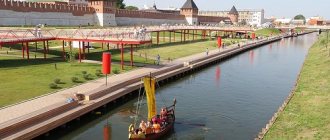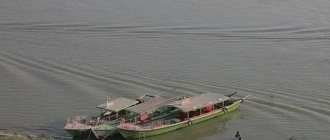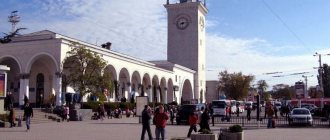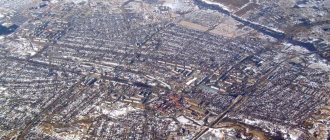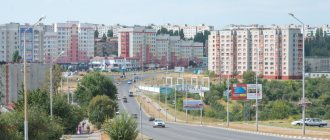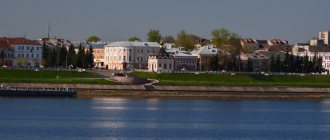Content
- 1 Cathedral of the Icon of the Mother of God “Recovery of the Lost” (Efremov)
- 2 Temple of the Matrona of Moscow (Efremov)
- 3 Temple of the Life-Giving Trinity (Efremov)
- 4 Temple of Michael the Archangel (Efremov)
- 5 Temple of St. Nicholas the Wonderworker (Efremov)
- 6 Church of the Intercession of the Blessed Virgin Mary (Grace)
- 7 Church of St. Nicholas the Wonderworker (Big Rafts)
- 8 Church of Luke of Crimea (East)
- 9 Church of St. Nicholas the Wonderworker (Vyazovo)
- 10 Temple of the Kazan Icon of the Mother of God (Dubiki)
- 11 Temple of the Savior Image Not Made by Hands (Lobanovo)
- 12 Church of St. Nicholas the Wonderworker (Mechnyanka)
- 13 Temple of the Apostles Peter and Paul (Novokrasive)
- 14 Church of the Epiphany (Ovsyannikovo)
- 15 Temple of Demetrius of Thessalonica (Pozhilino)
- 16 Temple of the Kazan Icon of the Mother of God (Turten)
- 17 Church of the Assumption of the Blessed Virgin Mary (Khmelevoye)
- 18 Temple of Michael the Archangel (Khomyakovo)
Cathedral of the Icon of the Mother of God “Recovery of the Lost” (Efremov)[edit]
The Church of the “Seeking of the Dead” was built on the site of the Church of the Transfiguration of the Lord (Nikitsky) of the early 19th century, which was destroyed in the 1930s.
In the 1970s, Efremov’s believers could not regularly attend services - the nearest churches were in the suburbs.
In 1989, a small wooden church with a capacity of 250 people was built. In the fall of 1992, construction of a stone temple began.
In 1996, the main altar was consecrated in honor of the icon of the Most Holy Theotokos “Seeking the Lost.”
In 2012, the temple in honor of the icon of the Mother of God “Seeking the Lost,” which is the second department of the Tula diocese, was given cathedral status.
Address:
Tula region, Efremov, st. Dachnaya, 2.
general information
The city is located on the picturesque banks of the Beautiful Mecha River, a tributary of the Don. Efremov is the administrative center of the municipality and has the status of an urban district. It is located 149 km from the regional center of Tula and 310 km from Moscow. On the Moscow-Donbass line there is the Efremov station of the Moscow Railway. The federal highway M4 “Don” passes nearby, and a branch from the highway M2 “Crimea” is also adjacent.
In 2022, the city was awarded the status of a priority development area. Efremov is also a single-industry town, with city-forming chemical industry enterprises. The main products are synthetic rubber, feed additives and sulfuric acid. Since 2011, the American company has opened the largest production site in Europe, where food enterprises are located. The main products are vegetable oils, semi-finished poultry meat products, premixes and much more.
Church of the Life-Giving Trinity (Efremov)[edit]
The Trinity Church was the oldest in Efremov; its foundation dates back to the construction of the fort - the 1630s. Initially, the temple with the chapel of the Smolensk Icon of the Mother of God was wooden. The stone Cathedral Church was built in 1795. Closed in 1929, finally destroyed in 1945.
On November 6, 2000, the laying of the foundation stone for the modern Church of the Life-Giving Trinity took place.
In 2001 the church was built. The interior decoration differs from the previous temple: the wall paintings have been replaced by large human-sized icons.
Together with the Church of the Archangel Michael, it is part of the temple complex in the City Garden on Red Square.
Address:
Tula region, Efremov, Red Square, City Garden.
Education of the city
With the advent of a settled population, some areas of terrain or forest land were named by nickname or personal name. Thus, a small part of the forest began to be called Ofremovsky (Efremovsky). During the development of the territory of the Black Earth Region in the 17th century, the land became the patrimony of the nobleman Ivan Turgenev. Around 1630, he founded the village of Efremovskaya (according to another version, the village of Efremovskoye).
In 1637, by decree of Tsar Mikhail Fedorovich, an oak fort was built in Efremov, which stood until 1689, after which it was dismantled. The fortress was inhabited by boyar children and city Cossacks. They served to protect the country's borders and received land in the surrounding area as compensation. At first, peasants moved to Efremov voluntarily. Under Peter, the lands gradually passed into the ownership of landowners, where serfs began to be brought. During the ongoing administrative reforms in 1719, Efremov became a district town.
Church of St. Nicholas the Wonderworker (Efremov)[edit]
According to surviving legend, the wooden parish St. Nicholas Church stood in a different place until 1792. Due to the new layout of the city, the church was moved and replaced by a stone one, which existed until 1832.
Later, a new stone church was built on the same site. It has not survived to our time.
The modern church in honor of St. Nicholas the Wonderworker was built a little away from the last St. Nicholas Church.
Consecrated in 2009.
Address:
Tula region, Efremov, Komsomolskaya str., 19 a.
Population: between two wars
The post-revolutionary years had a hard impact on the city; surplus appropriation - the confiscation of food from an already poor population - caused famine and a peasant uprising. As a result, by 1926, the population of Efremov, Tula province, decreased by a third, to 10,000 people. Due to extreme poverty, the population lived on a semi-subsistence basis and by 1931 had already decreased to 9,300 inhabitants. After the start of the industrialization policy, several industrial enterprises were built in the city, including factories for the production of ethyl alcohol and synthetic rubber. The population of Efremov more than doubled by 1939, to 26,708 people.
Church of Luke of Crimea (East)[edit]
In April 2015, believers in the village of Vostochny approached the diocese with the initiative to build a church.
We managed to find a former pumping station, where reconstruction began with the help of parishioners and benefactors. A bell tower was attached to the building.
On June 11, 2015 – the day of the saint’s Dormition – the first liturgy was served in the church.
On October 26, 2015, the consecration of the temple took place.
The temple became the first in the Tula region to be consecrated in honor of St. Luke (Voino-Yasenetsky).
In the temple there is a particle of the relics of St. Luke of Crimea.
Address:
Tula region, Efremovsky district, Vostochny village, no. 14.
Church of St. Nicholas the Wonderworker (Mechnyanka)[edit]
The wooden church in the village was consecrated in 1766.
The stone church was built in 1810 at the expense of parishioners and donors.
In December 1937, the rector was arrested, the temple was looted, and a warehouse was set up in the building.
In 1991, local residents began work on restoring the temple: the bell tower, iconostasis, and wall paintings.
On June 14, 2007, the discovery of the relics of St. John Sezyonovsky, secretly buried in a crypt near the southern altar wall of the St. Nicholas Church, took place.
Address:
Tula region, Efremovsky district, Mechnyanka village.
City on the Beautiful Sword
This year the southernmost city of the Tula region has an anniversary - Efremov is 370 years old! This material was collected by our reader, Efremovite Nikolai SHALUNOV .
Let it not thunder with anything, But it has come a long way, having mastered, Our modest city on the Sword of Krovinka, a cell of Russia. N. Titov.
| View of Efremov from the Kazenny (now Streletsky) bridge over the Krasivaya Mecha River. |
SETTLEMENT IN THE WASTELAND Efremov appeared on the outskirts of the Moscow state on the Mecha River (now the Beautiful Mecha) as a border post back in 1637. The territory on which the city arose belonged to the Kulikovo Field. The times were turbulent - the Golden Horde plundered settlements, and killed the inhabitants themselves or captured them and sold them into slavery. The population left their homes and went north beyond the Oka. Only at the end of the 16th century did people settle in the area of the future city of Efremov. The forests were named after the owners of the “Ukhozhaev” (territories): Efremov (Ofremov, Efremovsky), Klichin, Knyazhoy Yuryev. The wasteland under the Efremovsky forest in July 1628 was given as an estate to Ivan Turgenev, a distant relative of the writer Ivan Sergeevich Turgenev. And in 1637, voivode Timofey Bezobrazov wrote in a petition from the Efremov Cossacks to Tsar Mikhail Fedorovich Romanov: “And it was ordered, sir, to build a new Efremov city. And we, your slaves, for the city’s work, cut down the forest and cut down the towers and built the city: “So the Moscow state found a new city.
| Bolshaya Moskovskaya Street (now Sverdlova Street) was the most beautiful and well-groomed in Efremov. Rich merchants lived here. |
THE GERMANS GUARDED THE RUSSIA BORDER Efremov was finally formed four years after its founding. It included six settlements, the names of which spoke for themselves - Streletskaya, Pushkarskaya, Inozemskaya: The Inozemskaya settlement in Efremov arose like this. The Efremovsky governor by the name of Kotlovetsky behaved like a pig with the local residents and traded in “robbery and violence.” According to documents from the court, it is clear that he took from people 156 rubles, 16 horses, 7 cows, and from others “all sorts of junk and utensils.” The people fled from Efremov, the city was deserted. The unfortunate governor was imprisoned, and 14 family Germans, 24 Poles, more than 40 Ukrainians and Belarusians were brought to Efremov, who moved “from the Lithuanian side to eternal life in Russia.”
GUARDING THE HOMELAND During the Patriotic War of 1812, 1,347 Efremov peasants and townspeople fought against Napoleon in the Tula militia, who fought with the French near Tarutin and Maloyaroslavets, and then participated in the foreign campaigns of 1813-1814. At the old Efremov cemetery, a monument to a fellow countryman and hero of that war, Lieutenant General Emmanuel Yakovlevich Rashet, who died of wounds in 1825, has been preserved to this day. True, the cemetery itself is in an extremely neglected state, as is the city garden with a boat station. During the Azov campaigns of Peter I, convoys with ammunition and weapons for the flotilla being built in Voronezh stretched south through Efremov. The emperor himself also passed through our city with his companions. When the Tatar threat disappeared, the city lost its military significance. The fortress was dismantled, the deep ditch surrounding the city was filled up. Efremov lived an exclusively peaceful life.
MERCHANTS VERSUS NOBLEMS The fate of the city was determined by its favorable geographical location at the crossroads of busy trade roads leading from the south to the north of the country, to Tula and Moscow. At that time, the Beautiful Sword was a navigable river, along which significant quantities of grain and other goods were transported in different directions. Efremov becomes a transshipment point for Voronezh, Tambov, Oryol, Kursk wheat, which was transported by cart along the Voronezh and Livensky tracts. It is not surprising that given this state of affairs in the city, merchants, along with landowners, began to determine its further development. The “nobles,” that is, the nobles, were seriously concerned about the growing influence of the merchants in Efremov by leaps and bounds and sometimes suffered humiliating defeats from the former bast man peasants. Thus, the main road through the city since 1805 was Bolshaya Moskovskaya Street (now Sverdlova Street), where merchants lived. For this purpose it was paved with rubble. On Bolshaya Dvoryanskaya Street (now Karl Marx Street), where the landowners lived, the mud was impassable in the rain. Regarding the construction of residential buildings around the main shopping area of Efremov - Nizhnyaya (now Red Square), a serious struggle broke out again between merchants and nobles. Efremov's moneybags again gained the upper hand. To consolidate their victory completely, the merchants built covered shopping arcades on the square. The building project was approved by Alexander I himself in January 1820. Almost 100 years later, on the eve of the February revolution, capital journalist Konstantin Paustovsky, the future great writer, came to Efremov, who Fr.
FAMILY PEOPLE ACT After the abolition of serfdom, merchants took the lead in managing the city. Moneybags decided to build a railway through the city, as it promised millions in profits from the grain trade. For six years, merchants fought for technical progress in Efremov. Four times they gave bribes amounting to about 10 thousand rubles, having previously secured the support of Count Obolensky. Thanks to his connections at court, things took the desired turn. By the way, Prince Obolensky was the prototype of Stiva Oblonsky in the novel by L.N. Tolstoy "War and Peace". The great writer often hunted with the young count on his Efremov estate. In December 1874, the first locomotive train arrived at the Efremov station. During these same years, the merchant Kamenev opened the first printing house in the city.
THE GREAT WERE HERE Among the city's attractions at the beginning of the 20th century were the city theater with 400 seats, a cinema on Turgenev Street, a water tower built according to the design of engineer Shukhov, and it was from it that a water supply was laid to the fountain of the city garden. Griboyedov wrote the third and fourth acts of his immortal comedy “Woe from Wit” while visiting his friend Begichev in the village of Dmitrievskoye, Efremovsky district. For a long time, one of the founders of Russian agronomic science, I.A., lived and worked in the village of Krotkom, Efremovsky district. Stebut (1833-1923) This outstanding scientist became the organizer of a free library in the district, and in the village of Kratkoye, on his initiative, a public school was opened. Before the revolution, Russian writers and poets visited, lived, and worked in Efremov and Efremovsky district: Vasily Zhukovsky, Alexander Griboyedov, Mikhail Lermontov, Alexei Koltsov, Leo Tolstoy, Anton Chekhov, Nikolai Uspensky, Andrei Bely, Ivan Bunin, Konstantin Paustovsky.
THE MIRACLE HORSE-STONE On the bank of the Krasivaya Mecha River near the village of Kozye, Efremovsky district, lies the legendary horse-stone, which has stood in this place since the Ice Age. From a distance, it resembles a rider on a horse: hence the name of this unique open-air historical monument. It has been lying in this place for more than a thousand years and is a silent witness to many events. There is an assumption that our ancestors, the Slavs from the Vyatichi tribe, used it as a solar calendar. Subsequently, under the Grand Duke of Moscow Ivan III, trade caravans with Russian merchant ambassadors set off from the Horse-Stone to distant Turkey and city-states on the Crimean peninsula.
| This historical monument in the Efremovsky district is more than a million years old! |
DID YOU KNOW THAT: ...in MARCH 1913, the newspaper “Tula Rumor” provided the top ten cities of the Tula province by population. Efremov took an honorable second place in the number of inhabitants in those distant years after Tula: Tula - 129,000 inhabitants, Efremov - 17,100, Belev - 10,700, Krapivna - 6,100, Bogoroditsk - 5,700, Venev - 5,000, Epifan and Odoev - 4,400 each, Chern - 4,000 , Aleksin - 3600.
| The coat of arms of Efremov is depicted in the form of a green shield. Openers are painted on the shield with silver paints. All this is no coincidence. The shield is the protection of the Russian land from external enemies by the Efremovites. And the coulters show the completely unwarlike character of the inhabitants of Efremov, who in peaceful life were engaged in cultivating the land. |
Larisa Timofeeva.
Temple of Demetrius of Thessalonica (Pozhilino)[edit]
The temple in honor of the Holy Great Martyr Dmitry of Thessalonica was built in 1845 by Alexei Levshin, the landowner of the village of Pozhilino, with the help of parishioners.
It was closed in 1922. Since 1936, a village club has been organized in the refectory, and a grain warehouse has been organized in the summer church.
In 1997, the dome collapsed and the temple began to collapse.
In 2012, restoration work began: a dome was erected, an iconostasis was purchased, and a sculpture of the Mother of God was installed.
On December 7, 2014, the temple was consecrated.
On December 17, 2022, the consecration of the chapel took place in honor of Alexy, the man of God.
Address:
Tula region, Efremovsky district, Pozhilino village, Tsentralnaya st., 6a.
Temple of the Kazan Icon of the Mother of God (Turten)[edit]
The Kazan Church was built in 1802 by Prince Pyotr Ivanovich Odoevsky. In 1840, a chapel was built in it to Flora and Lavra. Instead of the ancient chapel, a stone chapel was built on the site of the appearance of the icon in 1848.
In the 19th century, the icon of the Mother of God was placed at the royal gates, and in the chapel at the source there was a copy of it. On the day of the Kazan Icon, many pilgrims gathered in Turten.
In 1937, the temple was closed, and later the chapel at the source was destroyed.
In 1947, the temple was returned to believers.
The temple was returned to believers in 1989 and restored. The spring and bathing area have been improved.
Address:
Tula region, Efremovsky district, Turten village.
Church of the Assumption of the Blessed Virgin Mary (Khmelevoye)[edit]
The Assumption Church was built in 1837 - 1850 on the site of a dilapidated wooden church.
Expanded in 1872.
Under Soviet rule, the temple was closed and destroyed.
Returned to believers in 2002, it was restored by the efforts of parishioners and management of the farm.
On November 15, 2012, the consecration of the restored church in honor of the Dormition of the Mother of God took place.
On December 24, 2012, the chapel of the blessed Prince Alexander Nevsky was consecrated, and on February 2, 2013 - the Great Martyr George the Victorious.
Address:
Tula region, Efremovsky district, village. Hoppy.
Population in pre-revolutionary times
The first people settled on the territory of modern Efremov in the 16th century; the settlements were small. Almost the only trade was beekeeping. The first data on the population of Efremov dates back to 1800. At that time, the population of 1,800 people consisted of burghers who were mainly engaged in the production and trade of grain. The development of manufactories and small handicraft industries led to an increase in the number of residents to 3,000 people. The population then continued to grow, reaching 9,800 people in 1856, and by 1861 it had grown to 10,500 people.
After the abolition of serfdom, peasants began to leave the poor agricultural region to work in industrial centers - Tula and Moscow. In 1897, the population of Efremov fell to 9,000 people. After the construction of the railway, grain trade revived again, and the processing of agricultural products - flour milling and distillery - developed. Due to this, the number of residents increased to 12,600 in 2013. The latest pre-revolutionary data from 1914 showed the number of inhabitants at 14,500 people.
